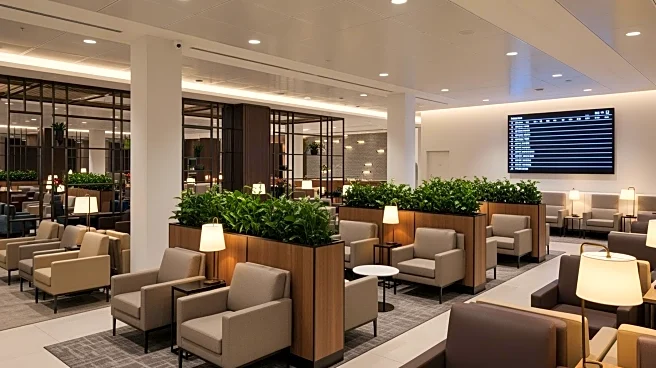What's Happening?
Delhi's Indira Gandhi International Airport (IGIA) has inaugurated its renovated Terminal 2 (T2), which will reopen for operations. The terminal, originally built by the Airports Authority of India four
decades ago, had been closed since April for extensive renovations. The upgraded T2 now boasts an annual capacity to handle 15 million passengers. Key features of the renovation include a self-baggage drop system, six new passenger boarding bridges, and an advanced high-resolution display system for real-time flight updates. The terminal's reopening is set to accommodate around 120 daily domestic flights operated by Air India and IndiGo. The first arrival and departure flights are scheduled for early Sunday morning. The renovation aims to provide a seamless airport experience, reducing wait times and enhancing safety and convenience for passengers.
Why It's Important?
The renovation of Terminal 2 at IGIA is significant as it enhances the airport's capacity and efficiency, which is crucial given its status as India's largest airport. The improvements are expected to streamline passenger flow and reduce congestion, thereby improving the overall travel experience. This development is particularly important for the aviation industry, as it aligns with the growing demand for air travel in India. The introduction of modern facilities like self-baggage drop systems and advanced boarding bridges reflects a shift towards more automated and passenger-friendly airport operations. This could set a precedent for other airports in the region, potentially influencing future infrastructure investments and technological upgrades in the aviation sector.
What's Next?
With the reopening of Terminal 2, passengers are advised to update their contact details and check flight or terminal information through airline websites, apps, or helplines. As operations transition, there may be changes in flight schedules, and airlines like IndiGo and Air India have already announced adjustments to their domestic operations. The airport's management will likely monitor the terminal's performance closely to ensure that the new systems operate smoothly and meet passenger expectations. The success of these upgrades could lead to further enhancements at other terminals or airports, as the industry continues to evolve towards more efficient and customer-centric services.











